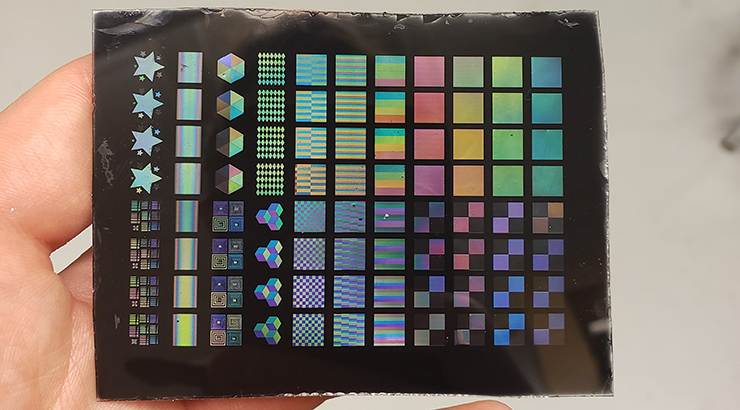Manufacturing processe for microstructures producing structural colors
ID# 2020-5063
Technology Summary
The inventors modified commercial processes to controllably and economically manufacture two-dimensional and three-dimensional, reproducible patterned surfaces of microstructures to create structural colors at a lower production costs than nanoscale materials. The inventors utilized chemical etching, photolithography, and 3D printing using conventional industrial printing equipment or die molds to create the soft or hard interface master containing the desired plurality of TIR microstructure templates. The interface master can be utilized in a continuous process such as a cast and cure process, and embossing processes for high volume production of the TIR microstructures. Additional post-processing steps may follow, including those involving a second materials – whether solid, liquid or gaseous – to accentuate the TIR, smooth regions of the microstructures and eliminate defects.
Application & Market Utility
Total internal reflection yields intense, vivid optical effects. The tunable microstructure geometries allow for highly customized, non-fading color patterns with wide angular separation and uniquely tailorable optical characteristics. Uses include anti-counterfeiting, product authentication and/or visual enhancement for color-shifting holograms on currencies, lotteries, ATM cards, and product packaging/labels. Flakes dispersed in a carrier, ink or paint may be applied uniformly for cosmetics, automotive paint, road signage and remote sensing.
Next Steps
Limited samples may be available for evaluation.

